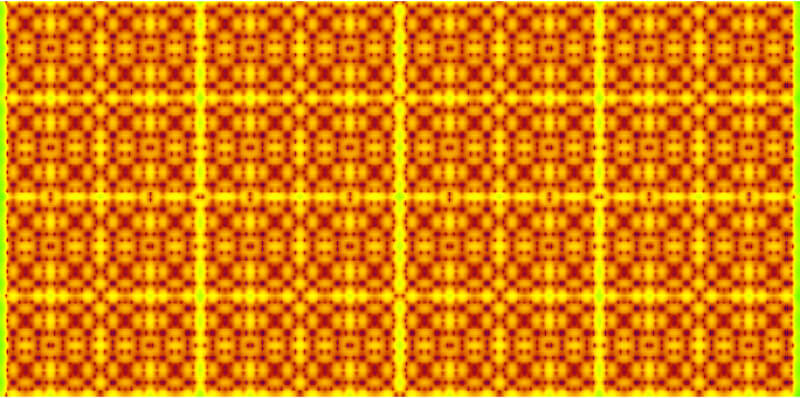Digital Click Fractals
Electroacoustic Composition, Fixed Media
2.0 Stereo Audio
Duration: 6’28“
The central question of this piece is: How can an in itself singular event, which occurs at a certain point in time, be developed in the time domain, i.e. literally rolled out? – and further still: How can a musical-artistic „result“ be extracted from it? The approach to this question begins with the examination of the single event itself. What is a single event in a musical-acoustic context? A possible answer to this question leads to a click impulse (or simply impulse or click) – or more precisely: in a computer-musical context to a digital click …
Piece info
„Digital Click Fractals“ is a conceptual sound experiment – a study that attempts to develop a per se singular event in time. A contradiction in terms?
To approach this question, I developed a so-called „Click-Generator“, which generates self-similar clicks according to a sophisticated replacement system. The source code for this „click generator“ can be found at Off-Sound/Coding/Click-Generator.
Due to technical resources I decided to use the 19th generation generated by the click generator. This consists of a total of 1,048,575 values, which were written to a file as an audio signal (array or vector). I then transposed this audio file up to 4 octaves up and down in quarter-tone grid steps, resulting in a relatively densely filled sound range of 8 octaves in total.
One consequence of these transpositions is the individual duration of each one. The higher the transposition, the shorter the duration and vice versa. In order to remain true to the symmetry when overlaying all 193 transpositions (actually 1 original and 2 times each 96 transpositions), they have to be centered, i.e. the respective center peaks have to be synchronized sample-accurately. This sample-exact superposition of the transpositions in the exact symmetrical center has the consequence that all center peaks of the transpositions culminate exactly in one and the same sample. This is thus the actual „ultimate“ click, the central core element of the composition.
Self-similarity
The phenomenon of self-similarity is revealed on the one hand in the waveform, which always has the same structure at any zoom level (see Fig. 1), and on the other hand in the spectral development (see Fig. 2). By means of the center-synchronized transpositions, the temporal macrostructure of the piece is symmetrical with respect to the central click.


Sonic result
Sonically, the fractal structure of the composition can be traced well. Here, the self-similar elements express themselves as events that take place in time, as rhythm, and further out as formal structure. This form-giving macrostructure experiences itself as a mirror-symmetrical arrangement, whose second half presents the negative of the first. The mirror axis itself is the central click, the core of the composition. Aiming at this, the piece approaches the central „macroclick“ in the exact center of the piece from the beginning, on the one hand through constant rhythmic acceleration, which is caused by the fractal smaller clicks, and on the other hand through constant volume increase, which is due to the gradually added superimpositions. Starting from this, the mirroring of the first half takes place, i.e. the rhythmic slowing down as well as the decrease in volume until the end.
To make the conceptual 1-channel piece a spatial stereo sound experience, I distributed the normalized waveform [-1..1] equally in the stereo field [L..R].
